
OR
A Pandora’s box in a royal thriller
The hottest love and the wettest bloodbath in Nepali history
Published On: September 28, 2018 09:39 AM NPT By: Peter J Karthak
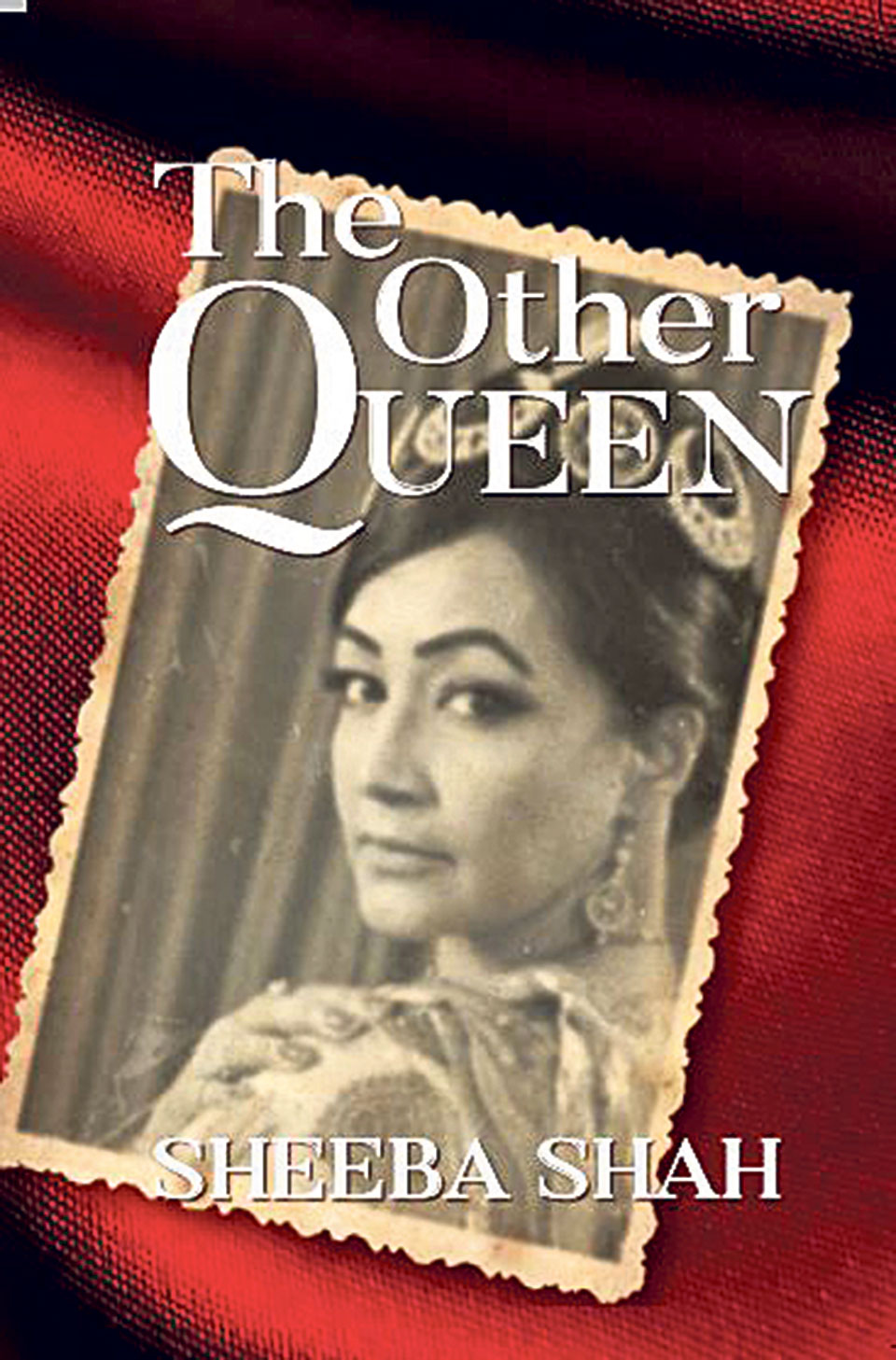
Under review is Sheeba Shah’s fourth novel, The Other Queen. As in her previous novel, Loyals of the Crown, the self-avowed novelist writes about the high and mighty of the erstwhile and pre-Rana active-Shah Kingdom of Nepal. Both novels paint detailed pictures of Kathmandu’s Hanuman Dhoka Royal Palace.
The Other Queen is Rajya Lakshmi, the Junior Queen – Kanchha Maharani – of King Rajendra Bikram Shah (r. 1816 to 1847). She’s also known as Rajendra Lakshmi, and her husband’s Kanchhi. She’s the younger biological sister of the Senior Queen, the Bada Maharani, Samrajya Devi.
The first names of the two queens are interesting in their respective meanings and intents:
Queen Samrajya, meaning ‘empire’, pines for the lost glory of what can in retrospect be called Greater Nepal, and thus calls for the repossession of Sikkim, Kumaon and Garhwal and those Tarai territories, lost to the Jan Kampani Bahadur (the Hon’ble John Company, or the Honourable East India Company) in the Anglo-Nepal War of 1814-16, ending in the Sugauli Treaty of 1816. She cites the treaty as nothing short of capitulation, and is anti-British to the core, venting her fiery air on the British Resident in Kathmandu, Brian Houghton Hodgson.
Rajya (‘realm’) Lakshmi is simply interested in claiming and instituting her just dues on the kingdom’s affairs. Since this is largely her story in the novel, we owe her greater details herein, but without any spoilers to lessen the many suspenseful incidences in the many Durbar whodunits of the novel.
Sheeba portrays Queen Rajya Lakshmi as a ‘wife unloved’, and a second fiddle, marginalized, neglected, and ostracized, thus left to languish in her royal chamber. Although she has borne two princes, like her elder sister, sexual fulfilment and affectionate companionship, among other human necessities, are denied her in later years. Such situations are sad for she’s tall, fair and beautiful, with a ‘sensuous face’ (Sir Francis Tuker), and regal in repose and dignified in her demeanor.
In comparison, her older sister is short, pudgy, and uncouth. And this ugly heap is violent, hysteric and ill-tempered. She typically henpecks her husband. It’s her brusque and brash behavior that nails her husband – tactically wise and decisive at crucial junctures – to mute docility and renders him impotent and indecisive in the kingdom’s affairs and the durbar’s governance. It’s Samrajya, therefore, who rules the royal roost while her younger and more comely and far more endowed sister with disarming charms is made to shrink.
No wonder Queen Rajya Lakshmi flings herself headlong into the passionate embrace of a manly and an attractive army officer, Gagan Singh Basnyat; and this scandal changes the course of Nepal’s history, to say the least. It’s historically a most tumultuous and illicit liaison between a married royal, a queen, no less, and a serving soldier of the middle ranks and with three wives of his own.
This is the first Gordian knot in the novel.
Rajya Lakshmi is a passionate and loving woman to Gagan, caring to her two sons, and occasionally accessible to the brooding and bereft King himself. This is the most redeeming fact in the novel’s royal palace even though it’s crawling with intrigues and treachery, denials and lies, pronouncements and counter-proclamations, coups and countercoups, claims and counterclaims, conflicts of interest openly evident to everyone concerned. The palace is the infernal epicenter in the heart of the capital city where one is likely not to see the next day; where each chautaria, bharadar, kazi, and even the Mukhtiyar of the Muluk leaves his house expecting not to return to it in the evening.
The palace intrigues, betrayals, and camp passions in the novel best Machiavelli, Rasputin, and the Borgia; and the conspiracies fomented by the various Thapa, Pande and the Basnyat factions provide organic Nepali tamasha, ramita and masala of various flavors. Add to this bitter soup the episodically clever and crafty but mostly tardy King, Rajendra, his Marquis de Sade son in Crown Prince Surendra, and the two sister-queens with their own ambitious agendas for the rule and succession of their own respective sons to the Shah throne. Matching her foes, the Junior Queen quickly learns to brandish her own brand of anger, outbursts, and lightning actions.
In this bejeweled cesspool of foul plays, assassinations, poisoning and other sordid tricks, Queen Rajya Lakshmi must and does live dangerously, plotting her own schemes, charting her own courses and counteroffensives. Her greatest fear, however, emanates from her own older sister, the Senior Queen. But even her death, of malaria, is no relief: now the dangers lie in the court of the evil Surendra, her stepson.
The historical episodes in Nepal’s modern age have been written with many speculations, reports, interpretations, and versions and editions. Nepal’s history, however, despite all these romances and facts, is largely a wheel of Swiss cheese – full of holes, duly filled in by native Hindu-centric and alt-historians and other faux pundits. Foreigners who have penned Nepal’s history lack the native flairs so characteristic of Nepal. But those who did set the facts right can be a soothing relief: Harka Gurung, Kamal Prakash Malla, Dhana Bajra Bajracharya, Mahesh Chandra Regmi, and other counterbalancing intellectuals, including Rishikesh Shaha.
By the extension of this argument, there are still the ‘which-is-what?’ queries, unanswered to this day. For instances, Bhimsen’s extermination of his foes, true and imagined, and Jung Bahadur’s role in the Kot Parba have many versions, as many as five or six for the latter.
Therefore, Sheeba’s depictions of the Nepal Durbar from the angles of the doings and undoing of her femme fatale protagonist in Junior Queen Rajya Lakshmi is yet another reissue of the same epoch. The theme is the same; Shah, however, presents her own variation, this one in literary fiction of the historical kind.
The Other Queen is a tumultuous love story written in blood, tears and butcherly destruction. What also happens after the tragedy of lost love and the causative deluge is the beginning of the first requiem for Nepal’s Shah Dynasty.
Queen Rajya Lakshmi’s Shah Era is devoid of any remarkable literary and artistic dynamism, a historic malign negligence that continued throughout the ‘Ranarchy’ (1846-1950). When blood and iron define a nation’s culture, no other acculturation is allowed to bud forth and flourish. When war is the self-paying industry of the new Shah Kingdom, delicate finesse has no place in the realm.
However, this period has some bright stars, anyway! Bhanu Bhakta Acharya of Ramgha in Tanahun is one. He comes a-visiting Kathmandu and finds the a-glittered city an ‘Alkapuri Kantipuri Nagari’ worthy of ‘Bhot, Chin, and London.’ His landmark poem is the original K-Town Rock! Rajya Lakshmi and her lover, Gagan Singh, themselves quote Bhanu Bhakta’s Ghansi Ballad during their one particular hazardous rendezvous in the distant gardens.
This is also the period of Brian Houghton Hodgson, the British Resident accredited by the Hon’ble East India Company to the Nepal Durbar of King Rajendra. He’s the first foreigner to create an encyclopedia of Nepal’s national characteristics in his long stay in the Kathmandu Valley.
Hodgson’s Newar Chitrakar associate was one Raj Man Singh who created his own fine illustrations and camera lucida images for Hodgson’s research papers. His artworks represent the Valley’s medieval heritage sites not yet vandalized by mutually warring parties or destroyed by earthquakes or such natural calamities.
Through Hodgson, we also know about the great Vajrayan scholar of Patan, Amritanand Bajracharya, a member of the eponymous secretive society. But he was brave enough to gift to the Resident immaculate codex on the Vajrayan Buddhism of Nepal, breaking the code of silence of his school. He was an instrumental informant to Hodgson, and his decision to leave his rare volumes on the Kathmandu Valley’s Buddhism in the care of the Resident was to save and salvage what were left in the face of the aggressive incursion of fundamentalist Hinduism in the Valley.
Hodgson had been gone from Kathmandu for some three years when the Kot Massacre happened. The erstwhile loafer, Lieutenant Bir Nar Singh Kunwar Thapa of just a few years ago, became Kazi and the all-powerful Shree Tiin Maharaj Jung Bahadur Rana, and Nepal’s Dark Century began during the Rana Rule, from 1846 to 1950. Nepal stagnated, like never before, while the entire world moved forward, like never before.
Sheeba’s heroine, the Junior Queen, Rajya Lakshmi Devi, and the styles with which she operates in and out of the madhouse called the Hanuman Dhoka Raj Durbar of King Rajendra Bir Bikram Shah Dev baffled me.
Throughout the narratives, the queen seems to be a peripatetic person, knowing the goings-on of every royal chamber in the palace. She’s omnipresent and omniscient; she’s also prescient. She knows the thoughts running through the mind of Jung Bahadur, for instance, and of whatever orgies and sadistic tortures and killings that are going on in Crown Prince Surendra’s ramparts of the Durbar; she also becomes aware of the blunders and miscalculations she herself makes in her nights of lust and political maneuvers during the days.
Only when I turned the last leaf of the novel and brooded over it, I realized that the queen is, in fact, in exile, somewhere in India – perhaps in Kashi, or Benares. She’s writing her own Remembrances of Things Past, in one volume. In her journal, she can be previous, she can digress, she takes stocks of what happened to whom, and who did what – all with the facility of rewinding her retrospection. All these ingredients form parts of the whole in the displaced and dislocated ex-queen of Nepal’s recollections in a foreign land on the Ganga Plains. This is how The Other Queen is constructed as a novel.
These are the overall literary techniques applied by Shah – a unique body of crafting employed in writing fiction in English by a Nepali novelist in Nepal. Sheeba, to further explain, has her own creative license to indulge in, and this is wildly evident in The Other Queen: the art and craft are inimitable in her rapid narration in short and crisp chapters.
The only spoilers I dare betray in this review of The Other Queen are the typos and errors rampant in its print. Commas force themselves in, quotation marks go a-begging where they are indispensable. This is a common and chronic bane in Kathmandu’s publishing world; and writers themselves are partly to be blamed.
So, when readers, who are speeding along Sheeba’s locomotive prose, are forced to brake their smooth flow on the speed bumps of unwelcome punctuation marks in the texts, may I soothe you with the following recipe of the Morning Joe, called Khawa, from the Queen, Rajya Lakshmi’s own golden bowl! It goes: Hot milk with ground raisin, almond, cashew, clove, cinnamon, and saffron (p. 289). The golden bowl is optional.
Who indeed are Samrajya, and Rajya Lakshmi?
While writing this review, I was curious about the parental origins, the Maiti, of the Senior Queen, Samrajya Lakshmi, and the Junior Queen, Rajya Lakshmi – the two biological sisters married to King Rajendra in their childhood.
I reread the books in my collection. No parental address!
I consulted my old friend, Nirmal Man Tuladhar, Professor, and the ex-Executive Director of CNAS, and the current Chairman at Social Science Baha:. He asked many historians and academics. No avail!
Gorakhpur is faintly suggested here and there, but even the author of The Other Queen is confused on the true roots of the two queens.
But one speculation is true: That Samrajya and Rajya – like King Ran Bahadur Shah’s Brahmin widow queen from Tirhut – are from somewhere the Ganga Plains.
These three Madheshi queens, between them, caused so much carnage in royal Kathmandu. Because of his Madheshi queen, Ran Bahadur became the Henry VIII of Nepal. Samrajya, in collusion with Bhimsen Thapa, finished off a good number of Kathmandu’s aristocrats and courtiers. Rajya Lakshmi, with Jung Bahadur, had so many royals, chautariya-s, bharadar-s and buda-s murdered that the Kot’s bloodletting allegedly reddened the Bishnumati below Kashtamandap.
The three queens from the Madhesh sapped Nepali manhood for ever to come.
Jung Bahadur’s own Bhandar Khal clan-cleansing is a bonus in passing.
These four bloody carnages emptied Kathmandu of its best and the brightest, the meanest and the mightiest; and Nepal’s organic virility slowly but surely passed on to the other groups of Nepal’s highlanders: the Gurkhas.
What Kathmandu shortly saw was the emergence of the mundane and peanut minions who weren’t worthy of any scratch, much less of the khukuri blades of the feuding courts of Nepal.
Nepalis are being ruled by these lesser men’s effete successors.
Peter J Karthak – past musician, bandleader, college/university teacher, and a media man for 25 years – is the writer of the novel, Kathmandruids.
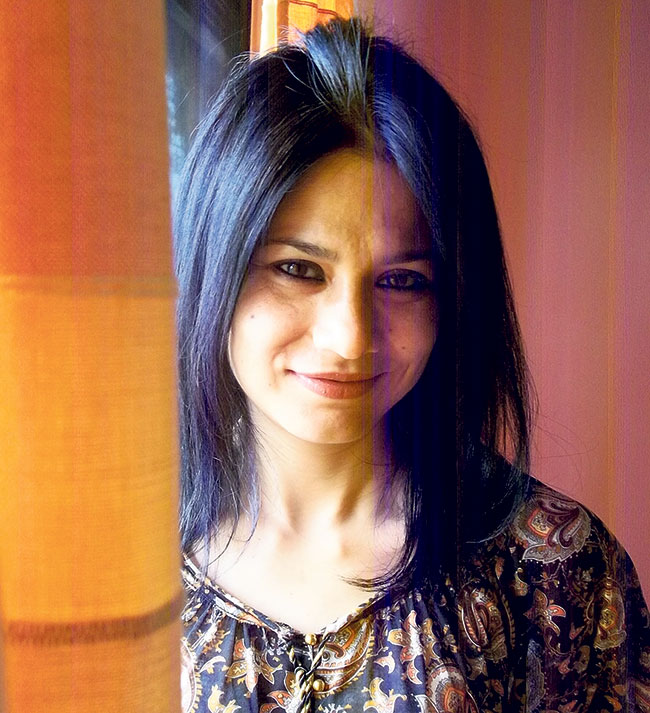
You May Like This
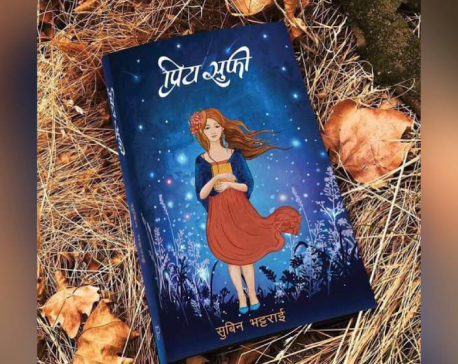
Life is never too pointless to be ended
"Priye Sufi," a book by Nepali author Subin Bhattarai, is a moving and consoling book. The story's primary lesson is... Read More...
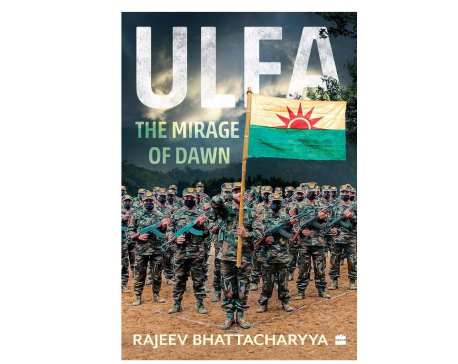
'ULFA: The Mirage of Dawn’ offers a remarkably balanced narration on history of ULFA
Rajeev Bhattacharyya’s book offers a remarkable history of ULFA, its formation and rise to prominence, the interplay of its principal... Read More...
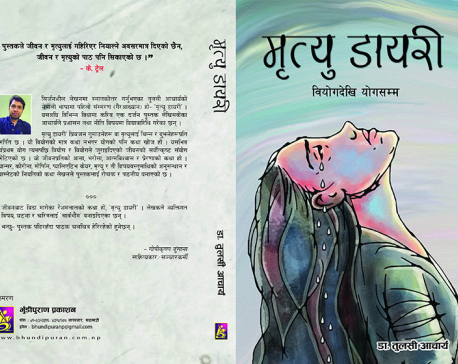
Mrityu Diary: A must read book about life and death
"Mrityu Diary" or the “Death Diary” is a book written by the author Tulasi Acharya, which is currently available in... Read More...





Just In
- CM Kandel requests Finance Minister Pun to put Karnali province in priority in upcoming budget
- Australia reduces TR visa age limit and duration as it implements stricter regulations for foreign students
- Govt aims to surpass Rs 10 trillion GDP mark in next five years
- Govt appoints 77 Liaison Officers for mountain climbing management for spring season
- EC decides to permit public vehicles to operate freely on day of by-election
- Fugitive arrested after 26 years
- Indian Potash Ltd secures contract to bring 30,000 tons of urea within 107 days
- CAN adds four players to squad for T20 series against West Indies 'A'













Leave A Comment